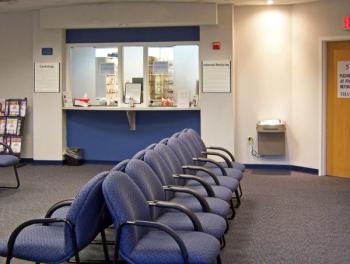
Oral DAA combination found effective in HCV patients
Direct-acting antiviral combination “represents an excellent treatment option” in some cases, says study’s senior author.
The combination of oral direct-acting antivirals (DAA) simeprevir and sofosbuvir is effective in real-world patients infected with hepatitis C virus (HCV), for those with and without cirrhosis and also after a liver transplant, even without ribavirin and at the shorter treatment duration of 12 weeks, according to a new study.
“We wanted to show that this DAA combination performs well in a real-world practice, with a response rate of about 90%, and is quite safe with no serious adverse events related to medication, in a population that was not originally included in randomized controlled trials,” senior author Mindie H. Nguyen, MD, associate professor of medicine at Stanford University Medical Center, told Medical Economics.
The researchers published their
Nguyen and colleagues conducted a retrospective cohort study in 198 consecutive patients with HCV genotype 1, including 148 non-transplant patients and 50 post-transplant patients. “This was a sizable cohort, very heterogeneous both ethnically and by disease,” noted Nguyen.
The patients were treated with simeprevir and sofosbuvir for 12 weeks between December 2013 and December 2014. The primary outcome was sustained virological response with undetectable HCV RNA 12 weeks after completion of therapy (SVR12). Risk factors evaluated for lack of SVR12 included HCV 1a vs. 1b, prior treatment vs. no treatment, and cirrhosis vs. no cirrhosis.
The results show SVR12 rates were similar in non-transplant (82%) and post-transplant settings (88%). This is a significant improvement compared to the response seen with pegylated interferon alpha 2a and ribavirin as well as for telaprevir- and boceprevir-based regimens, she said.
SVR rates were 79% for patients with cirrhosis and 78% for those with decompensated cirrhosis. This combination “represents an excellent treatment option for these patients while avoiding the potential toxic side effects of ribavirin in patients who may have baseline anemia and compromised renal function,” said Nguyen.
There were no significant differences in adverse events in patients regardless of cirrhosis or transplant status.
Primary care considerations
The researchers were not able to identify any single risk factor that predicted failure to achieve SVR12. However, using the historical risk factors of cirrhosis, prior anti-viral treatment and sub-genotype 1a vs. 1b, they showed that the presence of 2 or 3 of these factors was associated with a statistically lower SVR12 rate when compared to patients with 0 or 1 risk factor.
“If HCV patients have one risk factor, physicians should not be discouraged to treat them. If they have 2 or more risk factors, physicians should be more careful and either extend the treatment duration or add in ribavirin,” said Nguyen.
Primary care physicians need to screen all patients at-risk for HCV infection, including those born between 1945 and 1965, immigrants from endemic areas, and people with specific risks, such as those on dialysis and injection drug users. HCV-positive patients should be referred to a specialist or treated by physicians who are comfortable with that, she said.
“The vast majority of these patients tolerate new DAA therapy well, and should no longer be considered difficult to treat,” said Nguyen.
Newsletter
Stay informed and empowered with Medical Economics enewsletter, delivering expert insights, financial strategies, practice management tips and technology trends — tailored for today’s physicians.















